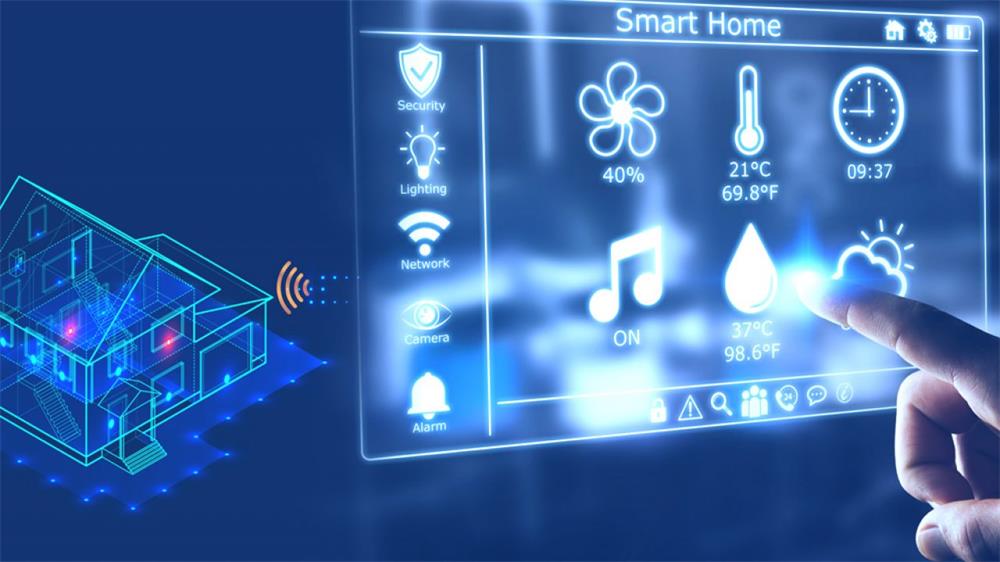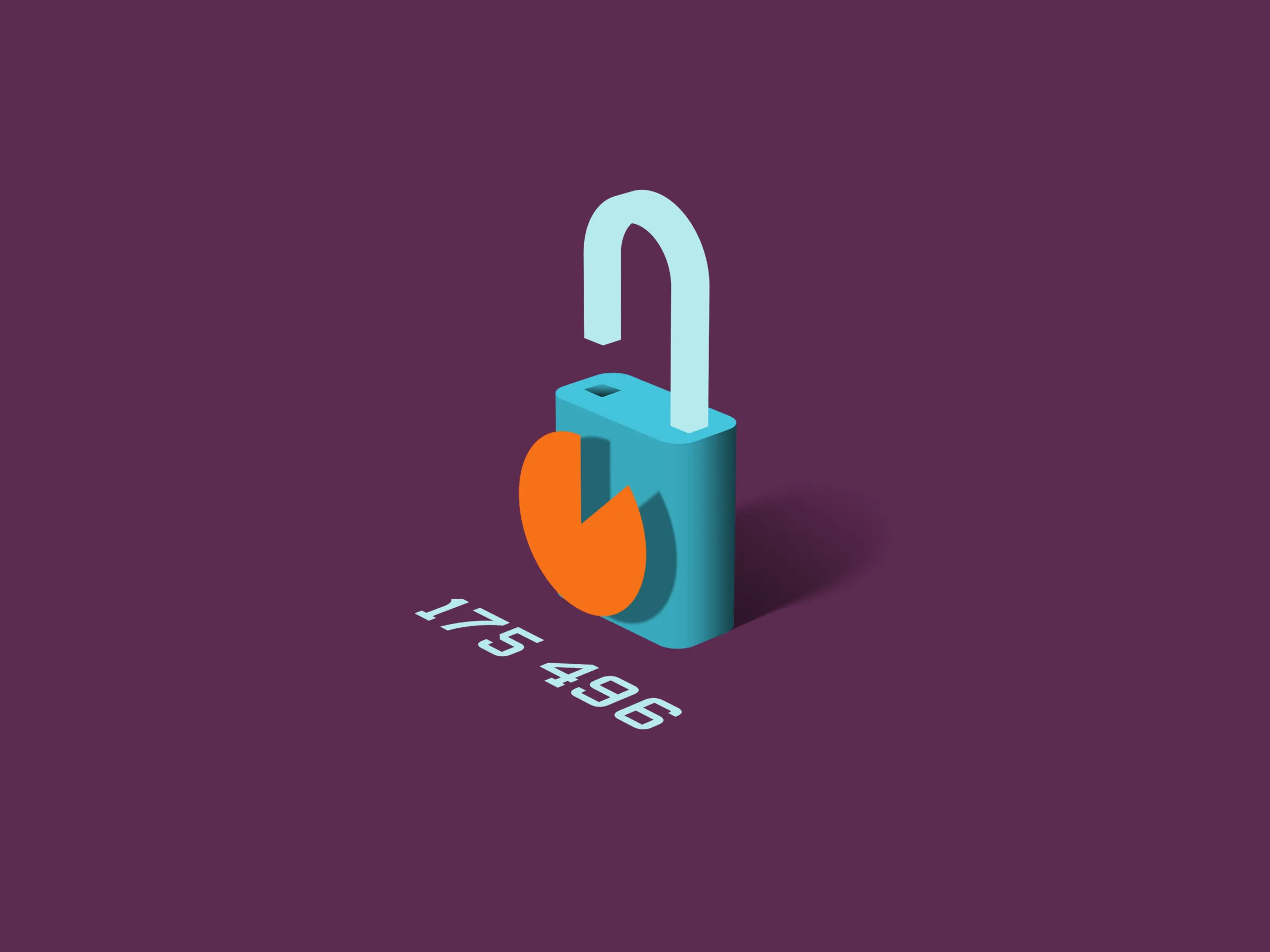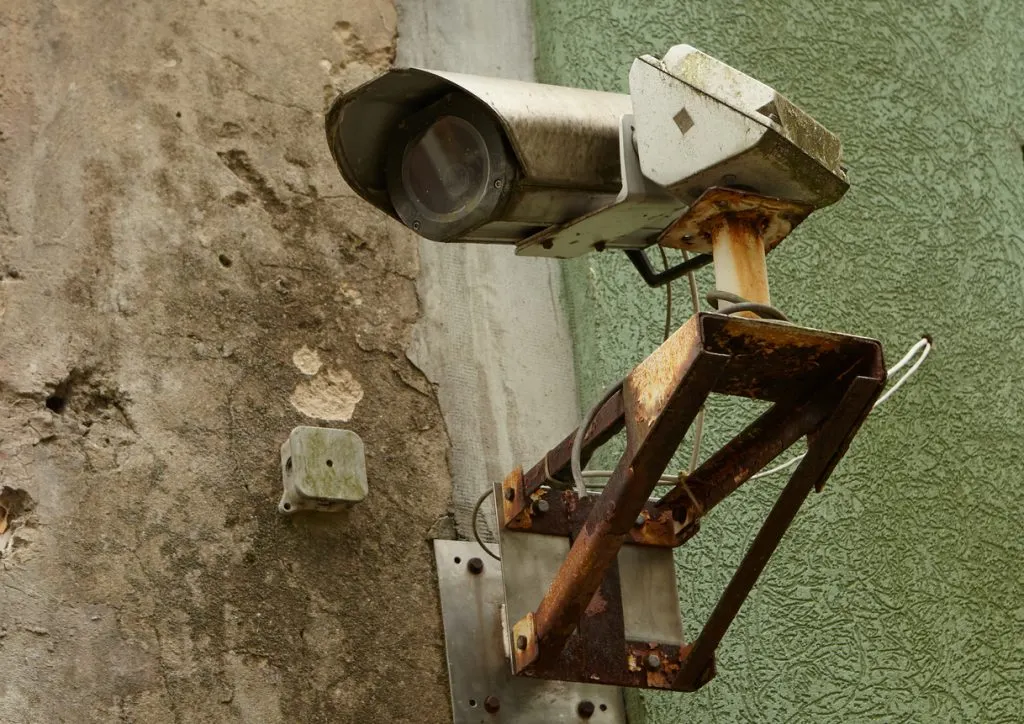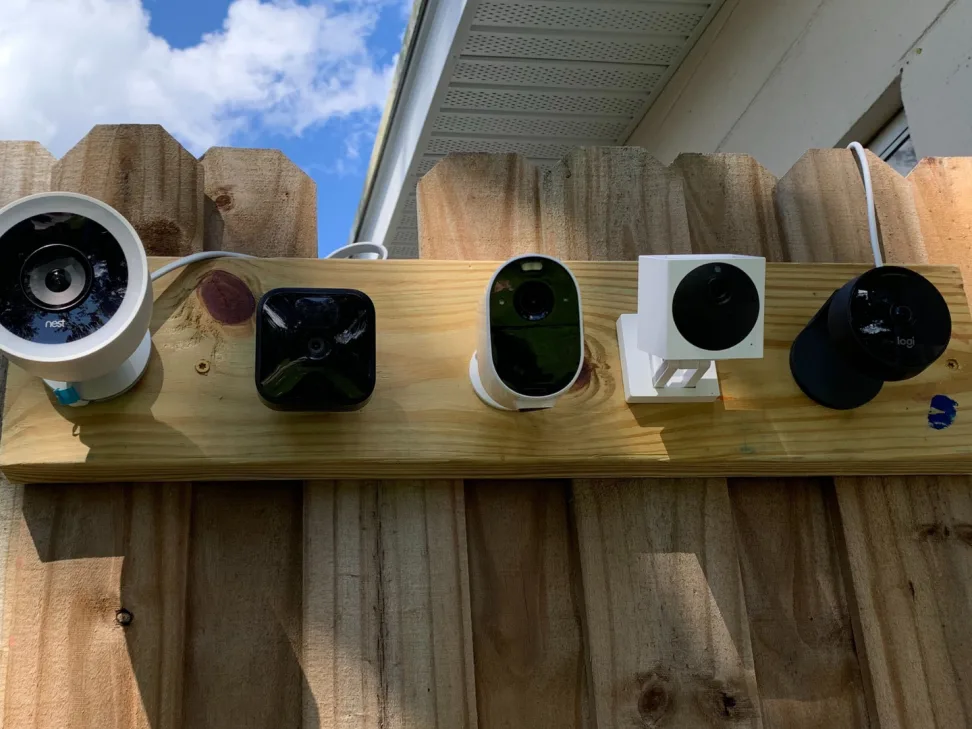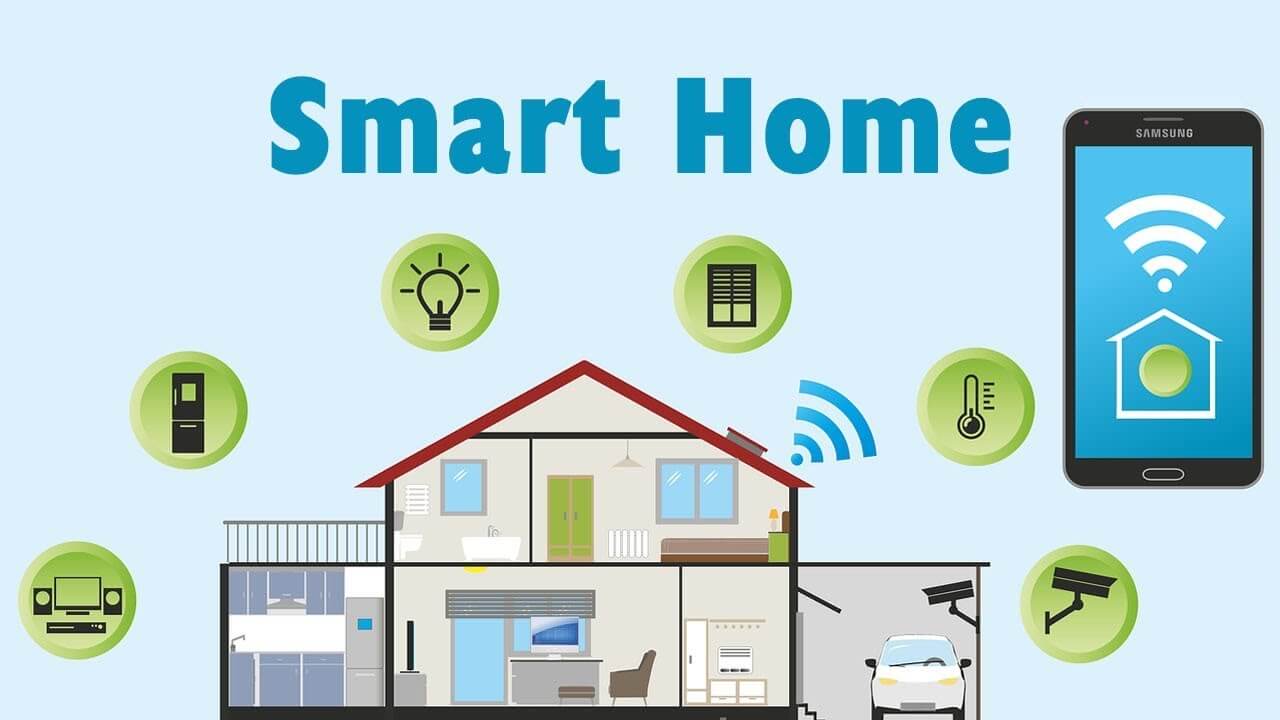Contents
- 1 The Future of Smart Home Security: Voice Control and AI
- 2 The Benefits of Using Voice Control and AI for Smart Home Security
- 3 Setting up your smart home security system
- 4 Using voice control for hands-free security management
- 5 Enhancing your security with AI-powered features
- 6 Maximizing Privacy and Data Protection
- 7 Conclusion
- 8 Conclusion
The Future of Smart Home Security: Voice Control and AI
Smart homes are becoming increasingly popular, with many homeowners automating their lighting, entertainment systems, and other household tasks. However, one area that is often overlooked is home security.
Luckily, advancements in technology have made it easier to secure your home than ever before. In this article, we’ll explore how using voice control and artificial intelligence can enhance your smart home security experience.
The Benefits of Using Voice Control and AI for Smart Home Security
Using voice control and AI for smart home security has many benefits. First and foremost, it makes managing your security system much easier by allowing you to control everything with just your voice. You no longer have to fumble with a keypad or pull out your phone every time you want to arm or disarm your system.
Additionally, using AI-powered features can enhance the effectiveness of your security system. For example, facial recognition technology can identify authorized users and alert you when an unauthorized person tries to access your home.
This means you’ll always know who’s coming in and out of your house. Furthermore, automating routines based on daily habits can make it appear as if someone is always home even when you’re away on vacation.
This can deter potential burglars who might be scoping out the neighborhood for easy targets. Using voice control and AI ensures that the devices in your smart home are working together seamlessly.
No more worrying about compatibility issues or trying to figure out which app controls which device. In the next sections of this article, we’ll dive into how you can set up a smart home security system with voice control and AI features as well as ways to maximize privacy and data protection.
Setting up your smart home security system
Choose a compatible AI assistant (e.g. Amazon Alexa, Google Assistant)
One of the first steps in setting up your smart home security system is to choose an AI assistant that is compatible with your smart home devices. Two of the most popular assistants are Amazon Alexa and Google Assistant. Both assistants offer similar features, such as voice control and integration with various smart home devices.
When choosing an AI assistant, consider which one you are more comfortable using. Amazon Alexa has been around longer and has a wider range of skills available, while Google Assistant is known for its natural language processing capabilities.
It’s important to note that not all AI assistants are compatible with all smart home devices. Check the compatibility before purchasing any new device to make sure it will work with your chosen assistant.
Install compatible smart home security devices (e.g. cameras, door locks, motion sensors)
Once you have chosen your AI assistant, it’s time to install compatible smart home security devices. This can include cameras, door locks, motion sensors, and other monitoring equipment. Before purchasing any device, make sure they are compatible with your chosen AI assistant and each other.
It’s also important to consider the specific needs of your household when selecting devices – for example, if you own pets that roam freely inside the house or have large windows near entry points that could be vulnerable to break-ins. When installing these devices, follow manufacturer instructions carefully and ensure they are properly secured.
If necessary or desired, professional installation services may also be available for some products. By following these steps in setting up your smart home security system – choosing a compatible AI assistant and selecting appropriate monitoring equipment – you can create a secure environment while enjoying the convenience of voice control technology in managing it all from one central hub.
Using voice control for hands-free security management
Teaching your AI assistant specific commands
Smart home security systems have come a long way in recent years, thanks to the rise of artificial intelligence and voice control technology. One of the biggest advantages of these systems is the ability to control your security devices with just your voice. For example, you can lock and unlock doors, turn on/off lights, and check camera feeds without having to lift a finger.
To get started, you’ll need to train your AI assistant to recognize specific commands. For instance, if you own an Amazon Echo device with Alexa as your AI assistant, you can tell Alexa “lock/unlock the front door” or “turn on/off living room lights.” It’s important to note that not all smart home devices are compatible with every AI assistant, so be sure to check compatibility before making any purchases.
Voice recognition technology for access restriction
Another advantage of using voice control in your smart home security system is the ability to use voice recognition technology for access restriction. This means that only authorized users will be able to access certain features or devices within the system.
For example, if you have children at home who are old enough to operate smart home devices but too young to understand how they work or make wise decisions about their usage, you can restrict their access by setting up voice recognition commands that only respond when spoken by adults. Additionally, this feature comes in handy when visitors come over who may not be authorized users.
Protecting privacy with custom wake words
A common concern among users who adopt an AI assistant is privacy and data protection. Some people feel uncomfortable knowing that a device is always listening for its wake word (the phrase that triggers its response). Luckily there’s an easy solution: create a custom wake word unique to your household.
With custom wake words, you can train your AI assistant to only respond when it hears the word or phrase you’ve chosen. This way, you know that your device isn’t listening in on conversations when it’s not supposed to.
Troubleshooting common voice control issues
Despite the convenience and power of voice control technology, there are still some common issues that users may experience. One of these is the inability of the AI assistant to recognize your commands. This can be caused by a few different factors, such as poor microphone placement or background noise.
To troubleshoot this issue, make sure that your microphone is placed in an area where it has a good line of sight to you and that there’s no background noise interfering with the command recognition process. If all else fails, try resetting your AI assistant and starting from scratch again with its setup process.
Enhancing your security with AI-powered features
Utilize facial recognition technology to identify authorized users and alert you of unauthorized access attempts
Facial recognition technology is an advanced form of AI that can identify people based on their unique facial features. By integrating this technology into your smart home security system, you can ensure that only authorized individuals are granted access to your home.
This is particularly useful if you have children, elderly relatives, or other family members who may need access to the house but do not have a key. The facial recognition feature works by scanning the faces of individuals who approach your door and comparing them to a database of authorized users.
If an unauthorized person tries to gain entry, you will receive an immediate alert on your phone or smart device. This gives you the ability to quickly take action and prevent any potential break-ins or thefts.
Set up automated routines that adjust your lighting and temperature based on your daily habits to make it appear as if someone is always home
One of the most effective ways to deter burglars is by making it look like someone is always home. With AI-powered automation, this has never been easier.
You can set up routines that adjust your lighting and temperature at different times throughout the day, creating the illusion that someone is inside. For example, you could program your lights to turn on in the evening and turn off during the day when no one is home.
You could also set up a routine that adjusts your thermostat at different times during the day so that it appears as though someone is adjusting it manually. By using these automated routines, you can enhance your smart home security while also saving money on energy bills.
Not only does it provide peace of mind knowing that someone is always watching over your property, but it also adds a layer of convenience as well. Utilizing these AI-powered features in your smart home security system can significantly enhance your overall security experience.
Facial recognition technology provides an extra layer of protection from unauthorized access, while automated routines can make it appear as though someone is always home. With these features in place, you can have peace of mind knowing that your home is protected and secure.
Maximizing Privacy and Data Protection
Why Privacy is Important in Smart Home Security
When you use voice control and artificial intelligence to enhance your smart home security experience, you’re also sharing a lot of personal data with technology companies. Your AI assistant, cameras, and other devices are collecting information about when you’re home and who else is in your house. That’s why it’s important to prioritize privacy and data protection.
Secure Your Devices with Strong Passwords and Two-Factor Authentication
One of the easiest ways to protect your smart home security system is by using strong passwords and enabling two-factor authentication. Don’t use generic passwords like “password123” or “admin.” Instead, choose something that’s difficult for others to guess but easy for you to remember. Use a combination of uppercase letters, lowercase letters, numbers, and symbols.
Two-factor authentication adds an extra layer of protection by requiring a code generated by an app or sent via SMS before logging into your account. Make sure this feature is enabled on all of your smart home security devices that support it.
Regularly Update Software and Firmware for All Devices
Hackers are constantly finding new vulnerabilities in technology products, so it’s important to keep your smart home security devices up-to-date with the latest software updates and firmware releases. These updates often include bug fixes that close security holes that could allow hackers to access your device or steal personal information.
Most manufacturers release software updates automatically or prompt users when one is available. However, firmware updates may require manual installation through the device’s web interface or mobile app.
The Importance of Reading User Agreements
Before purchasing any smart home security devices or AI assistants, make sure you read the user agreements carefully. These agreements outline how companies collect and use your personal data. You should also review the privacy policy to understand how companies protect your data and who they share it with.
Conclusion
By prioritizing privacy and data protection, you can enjoy the benefits of voice control and artificial intelligence in your smart home security system without worrying about hackers or personal data breaches. Use strong passwords, enable two-factor authentication, and regularly update all of your device’s software and firmware.
Remember to read user agreements carefully before purchasing any devices to ensure that you’re comfortable with how your data is being collected and used. With these precautions in place, you can feel confident that your smart home security experience is safe and secure.
Conclusion
The Future is Here: Embrace Smart Home Security
Using voice control and artificial intelligence to enhance your smart home security experience is not only practical, but it’s also a smart choice. By utilizing technology that can help you manage your home security with ease, you can rest assured that your family and belongings are safe from harm. The benefits of this technology are numerous.
With the ability to use voice commands, you can quickly lock doors or check on the status of your security system with just a few words. This type of convenience is especially helpful for those who are busy and on the go.
Furthermore, AI-powered features such as facial recognition and automated routines offer an added layer of protection for your home. By customizing these features to suit your specific needs, you can create a truly personalized smart home security experience.
Overall, we encourage readers to explore this technology for their own homes. While some may be hesitant to embrace new technological advancements, the benefits of using voice control and AI in enhancing smart home security cannot be ignored.
So why not take advantage of these cutting-edge innovations and enjoy peace of mind knowing that your home is well-protected? The future is here – it’s time to embrace it!

